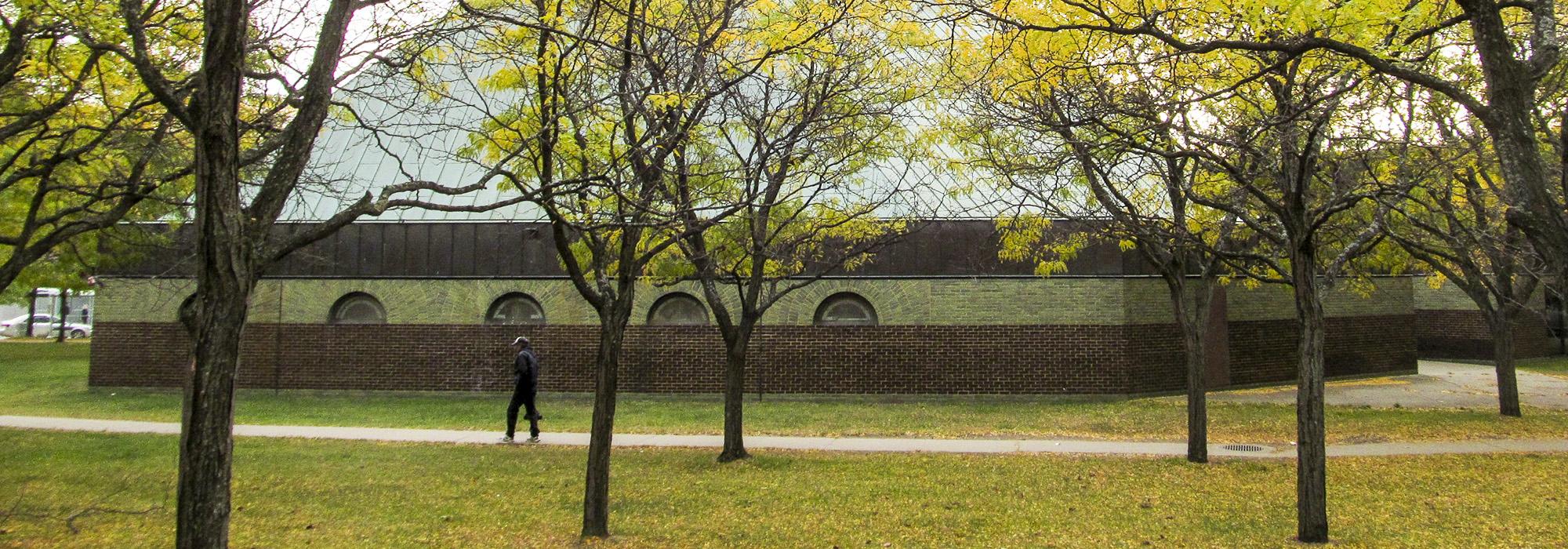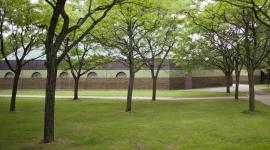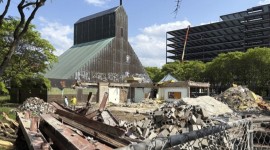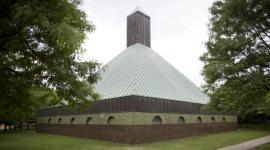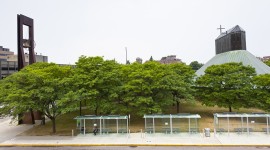Kiley's Cathedral of the Immaculate Conception Faces Demolition
On May 8th, 2018, the Burlington Free Press reported that the Cathedral of the Immaculate Conception in Burlington, Vermont, with its landscape designed by the renowned Dan Kiley, is to be sold for redevelopment. Due to a growing financial deficit and a shrinking parish, the cathedral was downgraded to a church, and its congregation is planned to be merged with that of the Cathedral of Saint Joseph, just two blocks away on Allen Street. The two places of worship have been moving towards a merger for more than a year, with the Cathedral of the Immaculate Conception (the first Catholic church in New England to be dedicated as a cathedral, in 1867) celebrating its last New Year's Day Mass in 2017. The property is valued at more than $4 million by the City of Burlington. The likelihood that the cathedral will be demolished is increased by its proximity to the upcoming CityPlace Burlington redevelopment project (location outlined below in yellow), which is to be located immediately south of the cathedral property and, at a cost of $242 million, will be one of the most expensive private developments ever built in Vermont. The developer, Don Sinex, has already expressed interest in acquiring the cathedral parcel. The move to sell the site is proceeding swiftly, with Bishop Christopher Coyne having already issued a decree desanctifying the church, allowing it to serve other purposes—a necessary step in readying it for sale. Meanwhile the ‘suppression and merger’ of the parishes has already occurred.
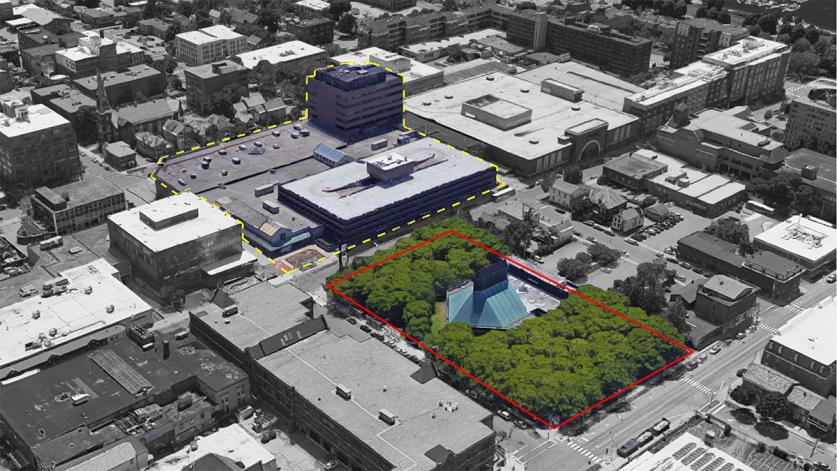
The idea of merging two of the city's six Catholic parishes was discussed as early as the 1970s, when the original cathedral was burned to the ground in an act of arson. A flurry of urban renewal projects beginning in the 1950s was responsible for displacing the middle-class Irish and Italian American neighborhoods surrounding the site, labelling the ethnically diverse enclave as “blighted” and effectively halving the Cathedral’s parish. Although the Cathedral was still considered an integral part of the surrounding communities, a smaller edifice was built in the Modernist style in 1977 to replace the older structure and accommodate a shrinking congregation.
The Cathedral and its surrounding landscape are the result of close collaboration between Kiley and well-known architect Edward Larrabee Barnes. Faced with the challenge of integrating the building with downtown Burlington, the Cathedral’s angular five-sided sanctuary of low-glazed, dark green brick walls and copper sanctuary roof are completely screened from the surrounding streets by a grid of 123 uniformly spaced honey-locust trees that fan out from the Cathedral on three sides. The 1.2-acre landscape is indeed integral to the central structure, continuing the sweeping line of the roof with a canopy of golden foliage. When viewed together, the structure and the landscape merge seamlessly into one another, functioning as both sanctuary and public space.
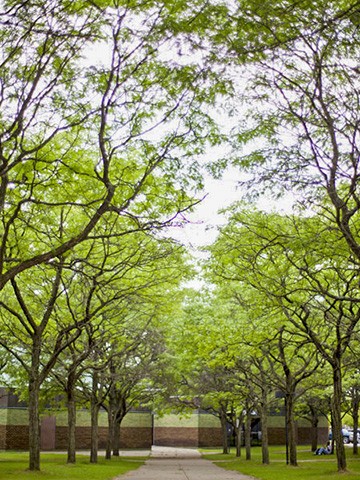
The grounds of the Cathedral of Immaculate Conception represent one of Kiley’s only realized public works in his home state. His other acclaimed projects include the Miller Garden (1955), the landscape for Irwin Union Bank & Trust (1954), and the North Christian Church (1964) in Columbus, Indiana. These three sites became part of the first multiple property National Historic Landmark to recognize postwar landscape architecture in America. The unique geometric layout of allées, bosques, and paths characterizes Dan Kiley’s designs, with an illusion of overstepping boundaries to create an ambiguous edge—a technique he called slippage and which is evident in the Burlington landscape. In 1997 Kiley was awarded the National Medal of Arts.
TCLF added the Cathedral of Immaculate Conception to its Landslide program as an at-risk landscape in June 2006, when it was first threatened by the then newly proposed Downtown Transportation Center. Unfortunately, the integrity of Kiley and Barnes’ vision has already been compromised by the center having been constructed on St. Paul Street, abutting the property and effectively blocking an undulating view of the landscape through the rows of locust trees. This was a key feature of Kiley’s landscape oeuvre, which was influenced by André Le Nôtre’s order, geometry, and sweeping lines.
Even if the closure of the cathedral and the ensuing merger are now likely to happen, the building and its surrounding landscape could still be saved if the sale of the property is contingent on maintaining the landscape and the architecture regardless of the site’s new function. There is an opportunity for appropriately scaled new development on the west end of the property, which presently contains a surface parking lot.
Preservation Burlington, a local non-profit organization whose mission is to preserve and protect the historic architecture and livability of Burlington through education and advocacy, is spearheading local efforts to protect the Kiley-designed landscape and the cathedral building.



